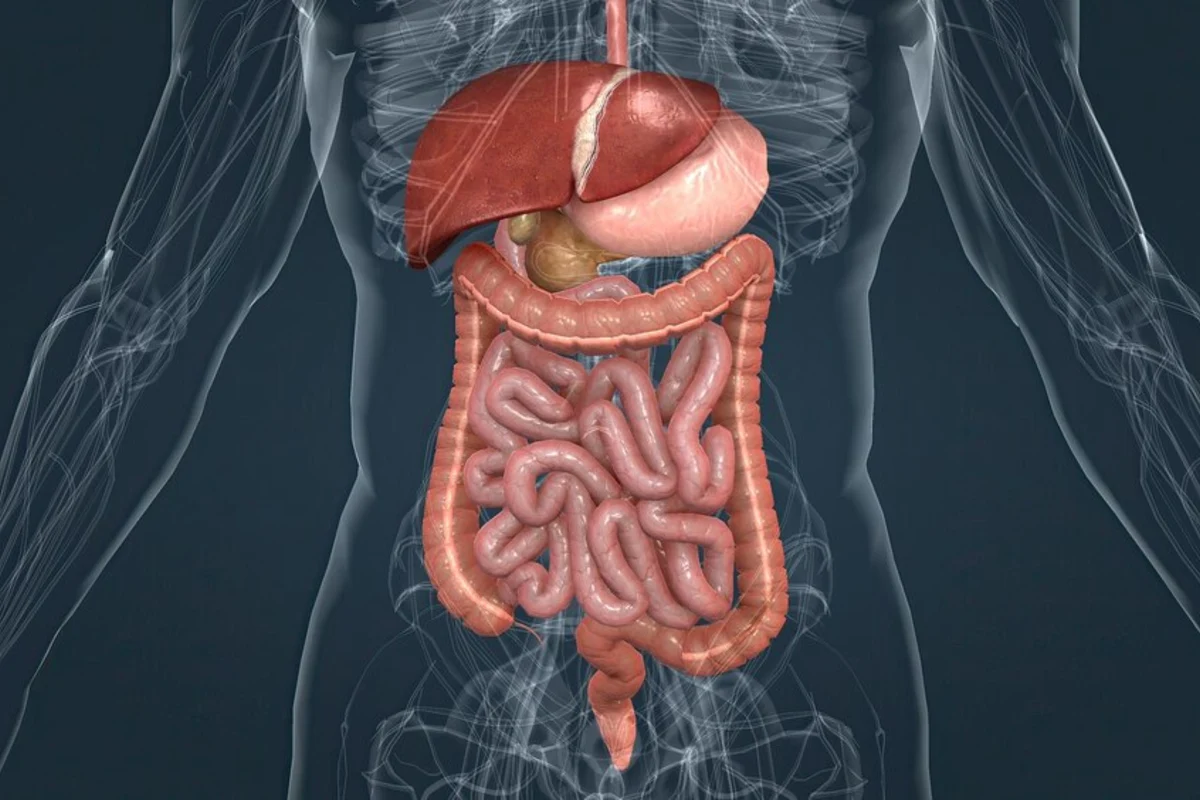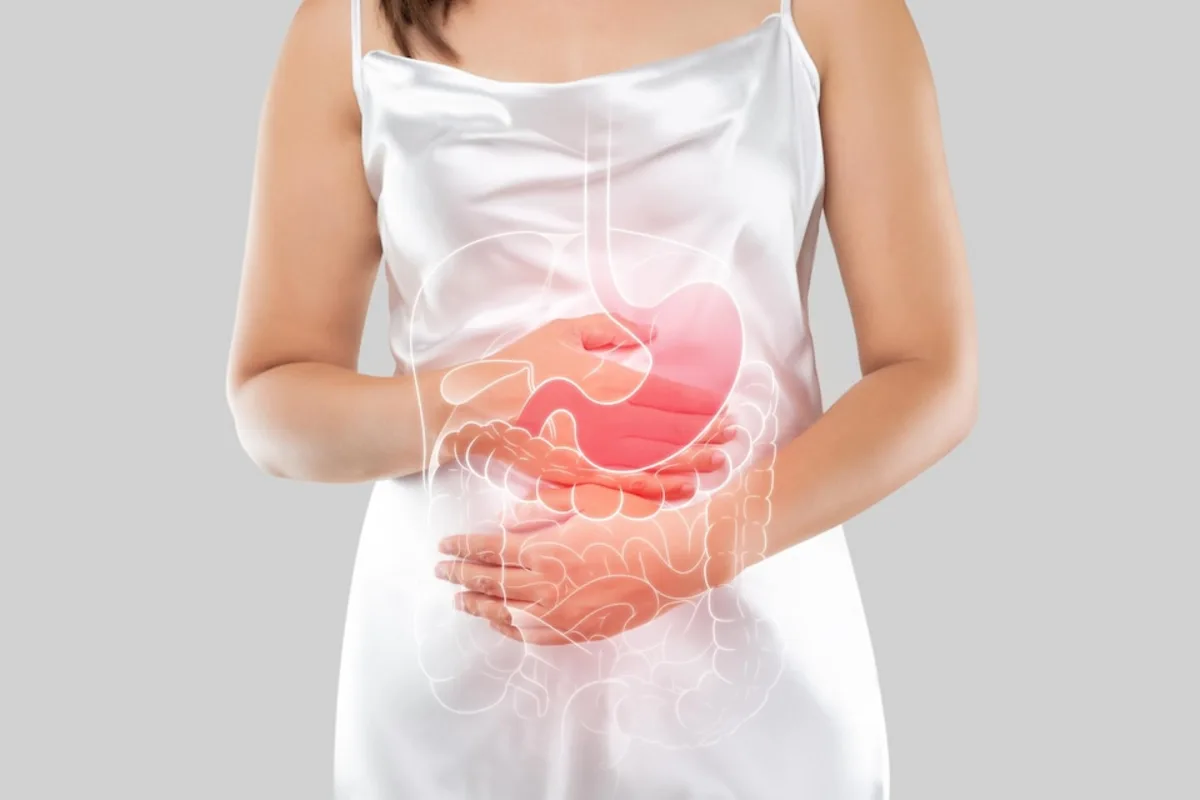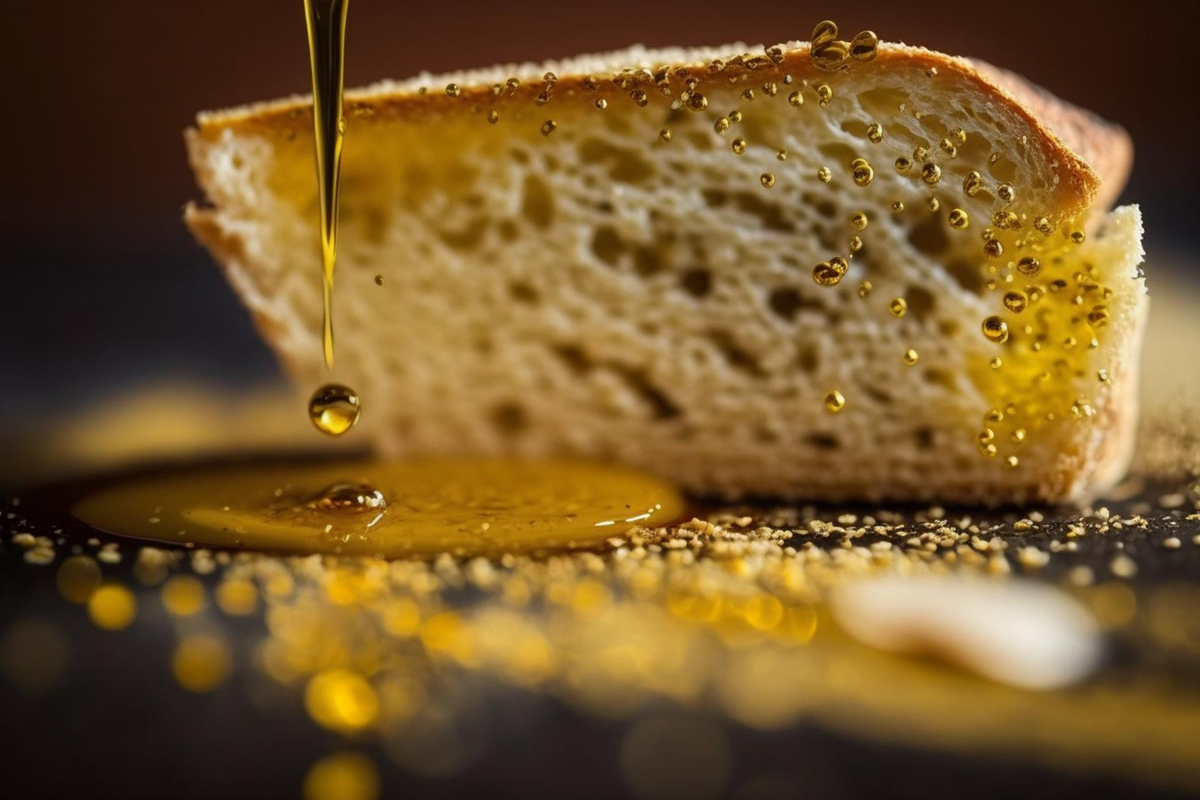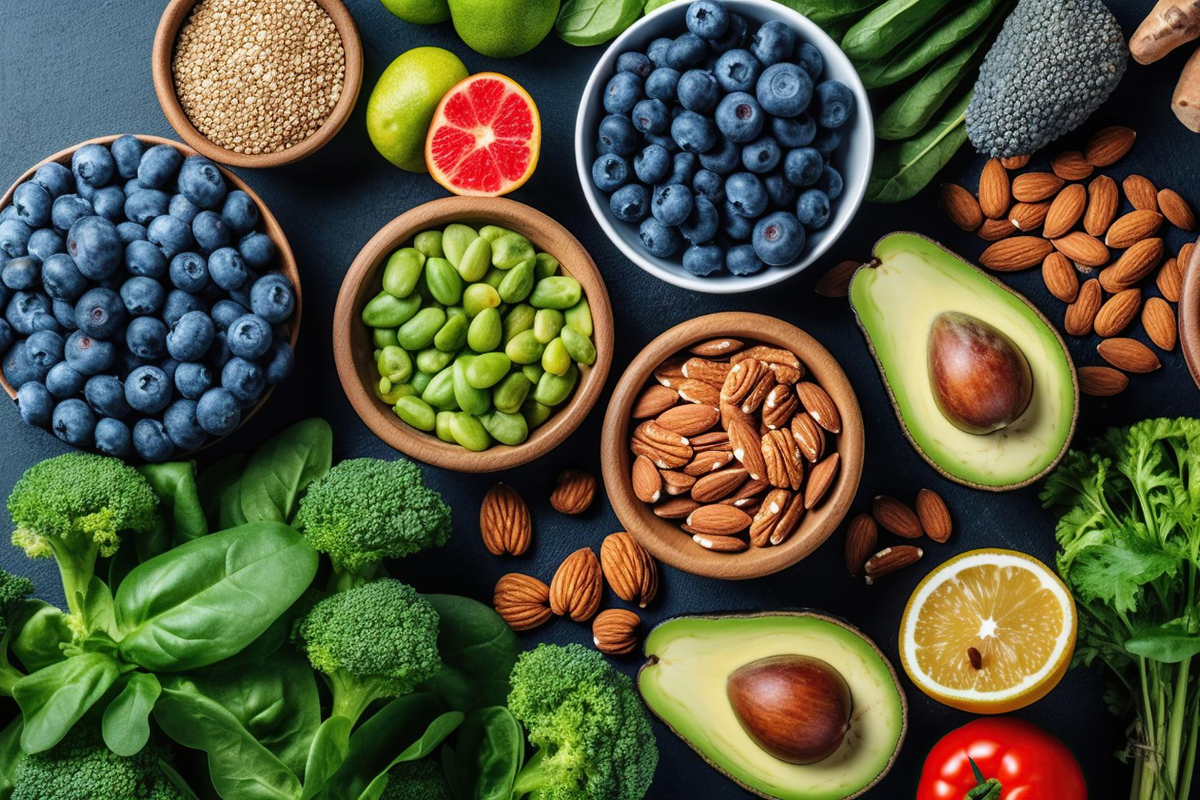If you want to know how your body processes the food you eat, you need to learn about the digestive system. This is a complex system that involves many organs and structures that work together to break down food, absorb nutrients, and eliminate waste. In this blog post, we will explore the main parts and functions of the digestive system, and why it is important for your health.
The Digestive System: A Network of Organs

The digestive system consists of two main parts: the gastrointestinal tract (GI tract) and the accessory organs. The GI tract is a long, hollow tube that runs from your mouth to your anus. It includes the mouth, pharynx, esophagus, stomach, small intestine, large intestine, and anus. The accessory organs are the liver, pancreas, and gallbladder. They produce and secrete substances that help digestion.
The GI Tract: A Journey of Food
The GI tract is where food travels through different stages of digestion. Here is a summary of what happens in each part of the GI tract:
| Organ | Movement |
|---|---|
| Mouth | Chewing |
| Pharynx | Peristalsis |
| Esophagus | Upper muscle in stomach relaxes to let food enter, and lower muscle mixes food with digestive juice |
| Stomach | Peristalsis |
| Small intestine | None |
| Large intestine | None |
| Anus | Peristalsis |
- Mouth: The mouth is where digestion begins. You use your teeth to chew food into smaller pieces, and your saliva to moisten and soften food. Saliva also contains enzymes that start to break down starches and fats.
- Pharynx: The pharynx is the back of your throat. It connects your mouth to your esophagus. When you swallow, a flap of tissue called the epiglottis covers your windpipe to prevent food from entering your lungs.
- Esophagus: The esophagus is a muscular tube that carries food from your pharynx to your stomach. It uses rhythmic contractions called peristalsis to push food along.
- Stomach: The stomach is a sac-like organ that stores and mixes food with gastric juices. Gastric juices contain hydrochloric acid and enzymes that break down proteins and fats. The stomach also kills harmful bacteria and viruses in food. The stomach churns food into a semi-liquid mass called chyme.
- Small intestine: The small intestine is the longest part of the GI tract, measuring about 6 meters in length. It has three sections: the duodenum, the jejunum, and the ileum. The small intestine is where most of the digestion and absorption of nutrients takes place. The small intestine receives bile from the liver and gallbladder, and pancreatic juice from the pancreas. Bile helps emulsify fats, while pancreatic juice contains enzymes that digest carbohydrates, proteins, and fats. The small intestine also has millions of tiny finger-like projections called villi and microvilli that increase its surface area and absorb nutrients into the bloodstream.
- Large intestine: The large intestine is the final part of the GI tract, measuring about 1.5 meters in length. It consists of four parts: the cecum, the colon, the rectum, and the anus. The large intestine’s main function is to absorb water and electrolytes from the remaining undigested material, and form solid waste called feces. The large intestine also houses beneficial bacteria that produce vitamins and help digest fiber.
- Anus: The anus is the opening at the end of the GI tract where feces exit the body. It has two sphincters: an internal one that opens involuntarily when feces are ready to be expelled, and an external one that you can control voluntarily.
Why is Digestion Important?
Digestion is important because it allows your body to obtain essential nutrients from the food you eat. These nutrients include:
- Proteins: Proteins are made of amino acids that are used to build and repair tissues, such as muscles, skin, hair, nails, hormones, enzymes, antibodies, etc.
- Fats: Fats are made of fatty acids that are used to store energy, insulate organs, protect cells, produce hormones, etc.
- Carbohydrates: Carbohydrates are made of sugars that are used to provide energy for cells, especially the brain and nervous system.
- Vitamins: Vitamins are organic compounds that are needed in small amounts for various functions in the body, such as vision, growth, immunity, metabolism, etc.
- Minerals: Minerals are inorganic elements that are needed in small amounts for various functions in the body, such as bone formation, blood clotting, nerve transmission, muscle contraction, etc.
- Water: Water is essential for life as it makes up about 60% of your body weight. Water helps transport nutrients and waste products in blood and lymph fluid; regulate body temperature; lubricate joints; moisten mucous membranes; etc.
The Digestive System: A Team Effort
Your digestive system is composed of several organs that work together to digest food and absorb nutrients. Each organ has a specific function and contributes to the overall goal of nourishing your body.
What Happens to the Food You Eat?
When you eat, your food travels through your mouth, esophagus, stomach, and small intestine. Along the way, it is broken down by enzymes and acids into smaller molecules that can be absorbed by your body.
The Small Intestine: The Main Site of Nutrient Absorption
The small intestine is a long, coiled tube that has three parts: the duodenum, the jejunum, and the ileum. The small intestine is where most of the nutrient absorption takes place. The inner lining of the small intestine has millions of tiny projections called villi and microvilli, which increase the surface area for absorption. Each villus contains blood vessels and lymph vessels that transport nutrients to different parts of your body.
The small intestine absorbs different types of nutrients in different ways. For example:
- Sugars, amino acids, glycerol, vitamins, and salts are absorbed by special cells called enterocytes, which transfer them to the blood vessels. The blood then carries them to the liver, where they are processed and distributed to other organs.
- Fatty acids and fat-soluble vitamins are absorbed by special cells called lacteals, which are part of the lymphatic system. The lymphatic system is a network of vessels that carries fluid and immune cells throughout your body. The lymphatic system transports fatty acids and vitamins to the thoracic duct, which empties into a large vein near your heart.
How Does Your Body Control the Digestive Process?
Digestion is not only a mechanical and chemical process, but also a hormonal and nervous one. Your body uses hormones and nerves to coordinate and regulate the functions of your digestive system.
Hormones and Nerves in Harmony
Hormones are chemical messengers that are produced by various glands and organs in your body. They travel through your bloodstream and bind to specific receptors on target cells. Hormones can stimulate or inhibit the production of digestive juices, regulate your appetite and satiety, and modulate your metabolism.
Some of the hormones involved in digestion are:
- Gastrin: Produced by the stomach, gastrin stimulates the secretion of gastric acid and pepsinogen (a precursor of pepsin, an enzyme that digests proteins).
- Cholecystokinin (CCK): Produced by the duodenum, CCK stimulates the contraction of the gallbladder (which stores bile) and the secretion of pancreatic enzymes (which digest fats, proteins, and carbohydrates).
- Secretin: Produced by the duodenum, secretin stimulates the secretion of bicarbonate (which neutralizes gastric acid) from the pancreas and liver.
- Glucagon-like peptide 1 (GLP-1): Produced by the ileum, GLP-1 enhances insulin secretion (which lowers blood sugar levels) and inhibits glucagon secretion (which raises blood sugar levels). GLP-1 also reduces appetite and delays gastric emptying.
- Ghrelin: Produced by the stomach, ghrelin stimulates hunger and increases gastric motility.
- Leptin: Produced by fat cells, leptin suppresses hunger and increases energy expenditure.
Nerves are bundles of fibers that transmit electrical impulses between your brain and other parts of your body. Nerves can activate or inhibit muscle contractions, glandular secretions, blood flow, and pain sensations in your digestive system.
Some of the nerves involved in digestion are:
- The vagus nerve: This is a cranial nerve that connects your brainstem to various organs in your chest and abdomen. The vagus nerve can stimulate or inhibit gastric acid secretion, gastric motility, pancreatic enzyme secretion, gallbladder contraction, intestinal motility, intestinal hormone secretion, and intestinal blood flow.
- The enteric nervous system: This is a network of nerves that innervates your gastrointestinal tract. The enteric nervous system can function independently or in coordination with the central nervous system. The enteric nervous system can regulate intestinal motility, intestinal secretion, intestinal blood flow, intestinal immunity, and intestinal sensation.
Conclusion: Nurturing Your Digestive Symphony
In conclusion, digestion is a fascinating process that involves many organs, hormones, and nerves working in harmony. By understanding how your digestive system works, you can make informed choices for optimal health. The symphony of digestion ensures that your body efficiently processes nutrients from the food you eat. By appreciating this intricate process, you can embark on a journey towards a healthier, more mindful relationship with your digestive well-being.
For more in-depth insights into digestive health, explore resources provided by authoritative sources like National Institute of Diabetes and Digestive and Kidney Diseases (NIDDK) and MyPlate, offering personalized tips for meeting your individual health needs.









